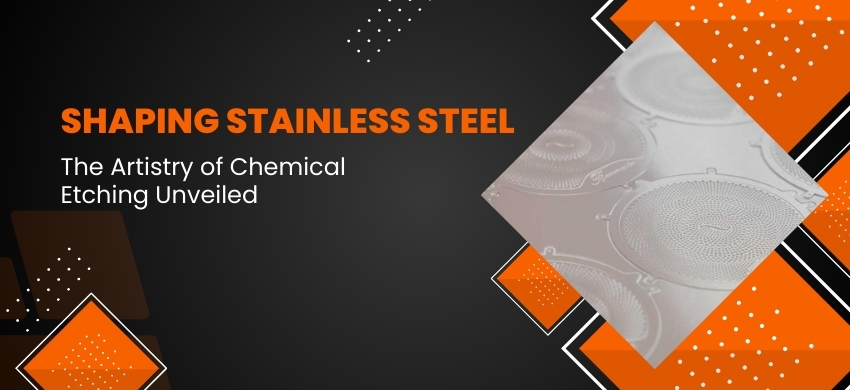UK-based suppliers, applicators and trainers. Call us today to get a free sample : 01604 644604


Stainless steel etching is a popular metal etching technique. It enables the etching of intricate and accurate components from stainless steel using corrosive metals.
This method is a strong choice for the production of intricate and safety-critical stainless steel components in a variety of sectors. It provides a number of benefits.
Photo etching, or chemical etching stainless steel, is an artistic process used for ages to form stainless steel art. It reveals a creative and adaptable way to make high-complexity, low-production-barrier precision components.
The art of chemically etching stainless steel, along with its benefits and uses, will all be discussed in this article.
Steel Versatility.
Chemical etching of stainless steel allows for a higher degree of complexity in the production of finely tuned, thin steel meshes, filters, and sieves.
Low Cost.
The method may produce sophisticated ideas and prototypes in a few days because it is economical.
Precision and safety.
It produces structurally sound, highly precise components with minimal tolerances and no burrs.
Unaltered Metal qualities.
The functional qualities, hardness, and temper of the etched stainless steel are all retained.
Aesthetics.
Acid etching stainless steel preserves a smooth, scratch-free surface without changing its inherent aesthetic appearance.
No Tool Wear.
Unlike hard tooling, which requires frequent maintenance of required tolerances, the photo tool used in the etching process creates a perfect reproduction of a part's dimensions without wearing out.
No Heat Affected Zones.
No areas are affected by heat or hard tooling when it comes to chemical metal etching. There is no change in the metal's ductility, hardness, or grain structure.
Appropriate for Electronic Parts.
Electronic parts like electrical contacts, connectors, EMI/RF shielding, pins, and terminals are perfect candidates for chemical etching.
Low Tolerances.
It can maintain low tolerances with all kinds of metals since the etching speed is meticulously regulated to reach the required tolerances.
The following steps are involved in chemically etching stainless steel:
Tool Design: CAD and picture tool design are the first steps in the process.
Photoresist Coating: A photoresist substance is applied to the metal sheet.
UV Light Exposure: In order to transfer the design onto the metal, the coated sheet is subjected to UV light.
Etching: Next, to selectively remove the metal and generate the required components, the metal sheet is etched using the appropriate etchants.
Because stainless steel etching is so precise and adaptable, it is used in many different sectors. Among the frequently used applications are:
Fuel Cell Plates.
Fuel cell technology uses stainless steel etching to create fuel cell plates, which are used in the production of renewable energy.
RFI/EMI Shielding.
To protect electronic components from radio frequency interference, RFI/EMI shields are made by etching stainless steel.
Optical Apertures.
The process of producing optical apertures, such those found in telescopes, microscopes, and different optical instruments, involves etching stainless steel.
Encoder Disks.
Encoder disks are created by stainless steel etching and are utilised in a variety of sectors for control and position monitoring systems.
Battery Springs/Contacts.
Battery springs and contacts, which are crucial parts of batteries for a variety of applications, are made via the etching of stainless steel.
Bespoke Metal Parts.
A wide range of bespoke metal parts with minuscule holes and a high level of flatness are produced using this method.
Sieves and Filters.
The method works well for producing finely tuned, thin steel sieves and filters.
Ornamental Patterns.
On stainless steel surfaces, it is also used to create writing, contrasting surfaces, and ornamental patterns.
To sum up, chemical etching stainless steel is a flexible and inventive method with many benefits for producing precision parts. It's an attractive solution for many businesses because of its low cost, high precision, and capacity to preserve the metal's qualities. The skill of chemically etching stainless steel opens up a world of possibilities for quickly and easily making elaborate and complicated designs.